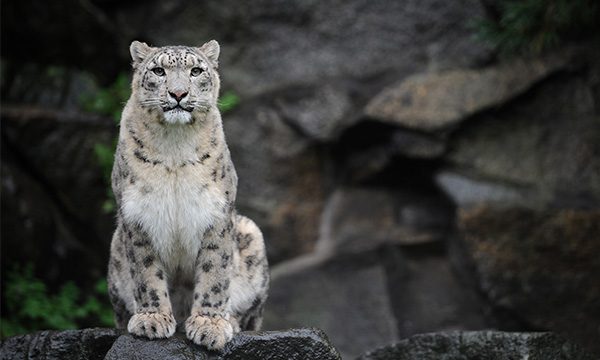Related Wildlife Species Founds in India
Lorem ipsum dolor sit amet, consectetuer commodo ligula eget dolor
Aenean massa Cum dis parturient montes.
Change language

Location :Near Leh, Ladakh Region, J&K 600-sq-kms
Coverage area : 4,400sq.km
Main attraction : Shapu, Bharal, Snow Leopard
Best time to visit :Mammal viewing - September to March / Bird viewing - March to May & September to December
Nearby excursions : Zingchen valley and Markha valley, Ganda La and Kongmaru La
Nearby cities :Leh
This National Park is rich in biodiversity, with the animals popping out in the snowy background. The Hemis is the largest sheltered area for snow leopards in South Asia. It is the only National Park which lies to the north of the Himalayas. Many endangered species of animal and plants are found in this high-altitude national park.
The park hosts a wide range of flora and fauna along with the
beautiful picturesque. After Nanda Devi Biosphere Reserve, Hemis is the largest contiguous national park in India. It got its name from a famous Buddhist monastery of Leh, the Hemis Gompa. In 1981, about 600sq.km of the Rumbak and Markha catchments was protected and later in the year 1987; it became a national park. After subsequent addition of area under the park, it has now a total area of about 4,400sq.km.
It is positioned in the eastern Ladakh plateau of Jammu and Kashmir, India. The hilly regions of the park remain covered with snow mostly and don't support the growth of vegetation. Same goes for the animals. Flooding is also frequent in here. Most of the animals and plants are found in the rain shadow region, a perfect place for life and beauty.
After the foundation of the park in 1981, there has been a rapid increase in the total area under it, which has taken the park to the pinnacle of being called the largest. In the year 1990, by adding up areas of adjacent land, today it is stretched around 4,400sq.km of the city. The land elevation is nearly 3000 to 6000m.
The area receives very less (160mm) or no rainfall in the monsoon season. It is mostly covered with snow, and generally, snowfall starts after November. The average summer temperature varies up to 15-degree centigrade whereas the average winter temperature is about -30-degree centigrade. The overall climatic condition is extreme cold. While the summer can be mildly warm, the winter is severe.
Since the most critical part of a visit to a national park, is the animals residing there, a trip must be planned accordingly. The animals sometimes may not show up due to the weather conditions prevailing at that time. So, the ideal time of visit varies from June to October. People looking primarily for the snow leopards must visit in the late winters, as it is the perfect time when they can be spotted easily.
The park is well known for the snow leopards that inhabit there. These creatures have been mentioned as endangered by IUCN. They usually wander in the late winter and prefer cold weather unlike the other members of the cat family. Most of the snow leopards are seen to be cramped in the Rumbak catchment area, with a count of nearly 200 individuals.
The Great Tibetan sheep, blue sheep and Ladakhi Urial are found in huge numbers and, are the primary source of food for the leopards. Endangered animals like Tibetan wolf, Eurasian brown bear, along with the least concerned species of red fox is found here. Mammals living here include the Asiatic Ibex, the Himalayan marmot, mountain weasel, Bharal and the Himalayan mouse hare.
About 73 species of birds are found, apart from the 16 species of mammals, consisting of some endangered species as well. The Himalayan griffon vulture, Tickell's and streaked leaf warbler, Tibetan Snow Finch, Eagle, Robin Accentor, Brown Accentor, Lammergeier vulture, Fork-tailed Swift, Fire fronter serin, chukar, the Himalayan snowcock and Red-billed Chough are some of the birds seen in abundance.
Ahmadabad , 1278km
Allahabad , 1080km
Bangalore , 2310km
Indore , 1234km
Kolkata , 1648km
Chennai, 2317km
Chandigarh , 339km
Delhi , 571km
Hyderabad , 1823km
Kanyakumari , 2895km
Leh , 10km
Ladakh , 102km
Mumbai , 1689km
Srinagar , 227km
Airways
Leh Kushok Bakula Rimpochee Airport is at a distance of about 10km from Hemis National Park. Buses regularly ply from Leh to the park.
Railways
Jammu Tavi railway station is the nearest railhead at about a distance of 20km. Stations in Haryana can also be an option.
Roadways
Leh is the nearest city. The park is approachable from the city due to the daily bus services and the availability of taxis. Roadways are the best means of transport for the locals, and it is the safest mode during winter. Leh-Manali highway is the route for long distance travel.
Accommodation facilities
There are several camps set up in and around the national park. This can be the preferable choice for wildlife enthusiasts and photographers. The villages set up in the vicinity provide paid accommodation and food. As Leh is the nearest city, people can find many hotels and restaurants to sleep and dine, that suits their pockets. The National Park doesn't have any hotel within its borders, though; people can stay in Hemis monasteries.
Things to do
This high-altitude national park gives an excellent and adventurous chance for trekking in the snow-covered regions, within and around the park. People can accomplish their photographic hobbies without much expenditure. Since it is a national park, the border is reserved for research and study. The safari ride is just perfect for a tour around the serene, white and harmonious park, with the animals stomping from one place to another.
So, with no more delay, hope you are planning a visit to this beautiful and mystique land!